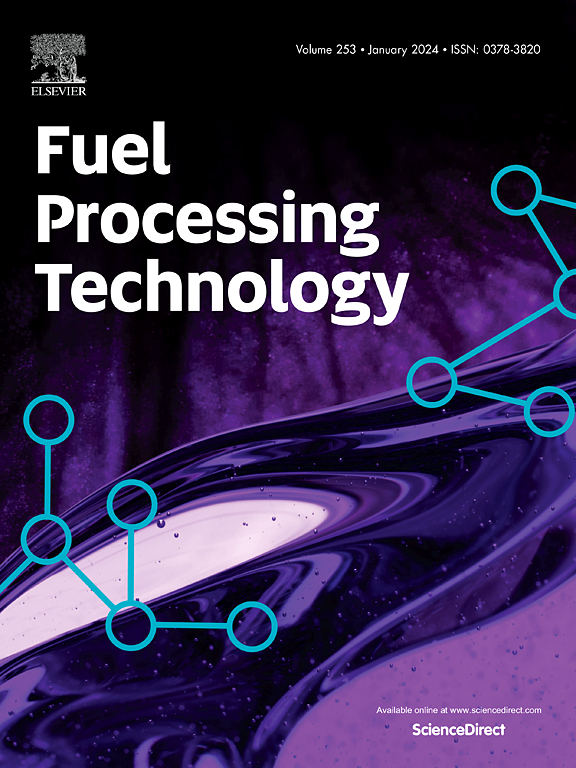Pt-Sn/SAPO-11: A preferred high-performance, stable, and regenerable hydrogenation catalyst for Jatropha oil
IF 7.7
2区 工程技术
Q1 CHEMISTRY, APPLIED
引用次数: 0
Abstract
The sustainable aviation fuel derived from Jatropha oil helps to reduce the dependence of the aviation industry on fossil energy and decrease total carbon emissions. To achieve efficient catalytic conversion of Jatropha oil without loading more precious metals, one-step catalytic hydrogenation of Jatropha oil to bio-jet fuel over La, Ce, Y, or Sn-doped Pt/SAPO-11 was studied in this paper. The characterization results from XRD, N2 adsorption-desorption, TEM, and NH3-TPD showed that the catalytic activity of Pt-Sn/SAPO-11 was significantly better than that of other element-doped catalysts because Sn doping regulated the pore size of the support, promoted the dispersion of Pt particles, and balanced the relative distribution of metal active sites and acid sites. Moreover, Sn doping can stably maintain the high catalytic activity of Pt/SAPO-11 for up to 60 h. The simple calcination treatment can effectively remove the coke deposited during long-term service and restore the hydrodeoxygenation capacity of the catalyst to the initial level. However, the other ability to completely recover the Pt-Sn/SAPO-11 catalyst depends on the improvement of the regeneration process. This work will help to promote the value-added utilization of Jatropha oil and contribute to solving the competition between food and fuel.

Pt-Sn/SAPO-11:一种高性能、稳定、可再生的麻疯树油加氢催化剂
从麻疯树油中提取的可持续航空燃料有助于减少航空业对化石能源的依赖,减少碳排放总量。为了在不加载更多贵金属的情况下实现麻疯树油的高效催化转化,本文研究了在La、Ce、Y或sn掺杂Pt/SAPO-11上将麻疯树油一步催化加氢制生物喷气燃料。XRD、N2吸附-解吸、TEM和NH3-TPD表征结果表明,由于Sn掺杂调节了载体的孔径,促进了Pt颗粒的分散,平衡了金属活性位点和酸位的相对分布,Pt-Sn/SAPO-11的催化活性明显优于其他元素掺杂催化剂。此外,锡掺杂可以稳定地保持Pt/SAPO-11的高催化活性长达60 h。简单的煅烧处理可以有效地去除长期使用过程中沉积的焦炭,使催化剂的加氢脱氧能力恢复到初始水平。然而,完全回收Pt-Sn/SAPO-11催化剂的其他能力取决于再生工艺的改进。这项工作将有助于促进麻疯树油的增值利用,为解决食品和燃料之间的竞争做出贡献。
本文章由计算机程序翻译,如有差异,请以英文原文为准。
求助全文
约1分钟内获得全文
求助全文
来源期刊

Fuel Processing Technology
工程技术-工程:化工
CiteScore
13.20
自引率
9.30%
发文量
398
审稿时长
26 days
期刊介绍:
Fuel Processing Technology (FPT) deals with the scientific and technological aspects of converting fossil and renewable resources to clean fuels, value-added chemicals, fuel-related advanced carbon materials and by-products. In addition to the traditional non-nuclear fossil fuels, biomass and wastes, papers on the integration of renewables such as solar and wind energy and energy storage into the fuel processing processes, as well as papers on the production and conversion of non-carbon-containing fuels such as hydrogen and ammonia, are also welcome. While chemical conversion is emphasized, papers on advanced physical conversion processes are also considered for publication in FPT. Papers on the fundamental aspects of fuel structure and properties will also be considered.
 求助内容:
求助内容: 应助结果提醒方式:
应助结果提醒方式:


